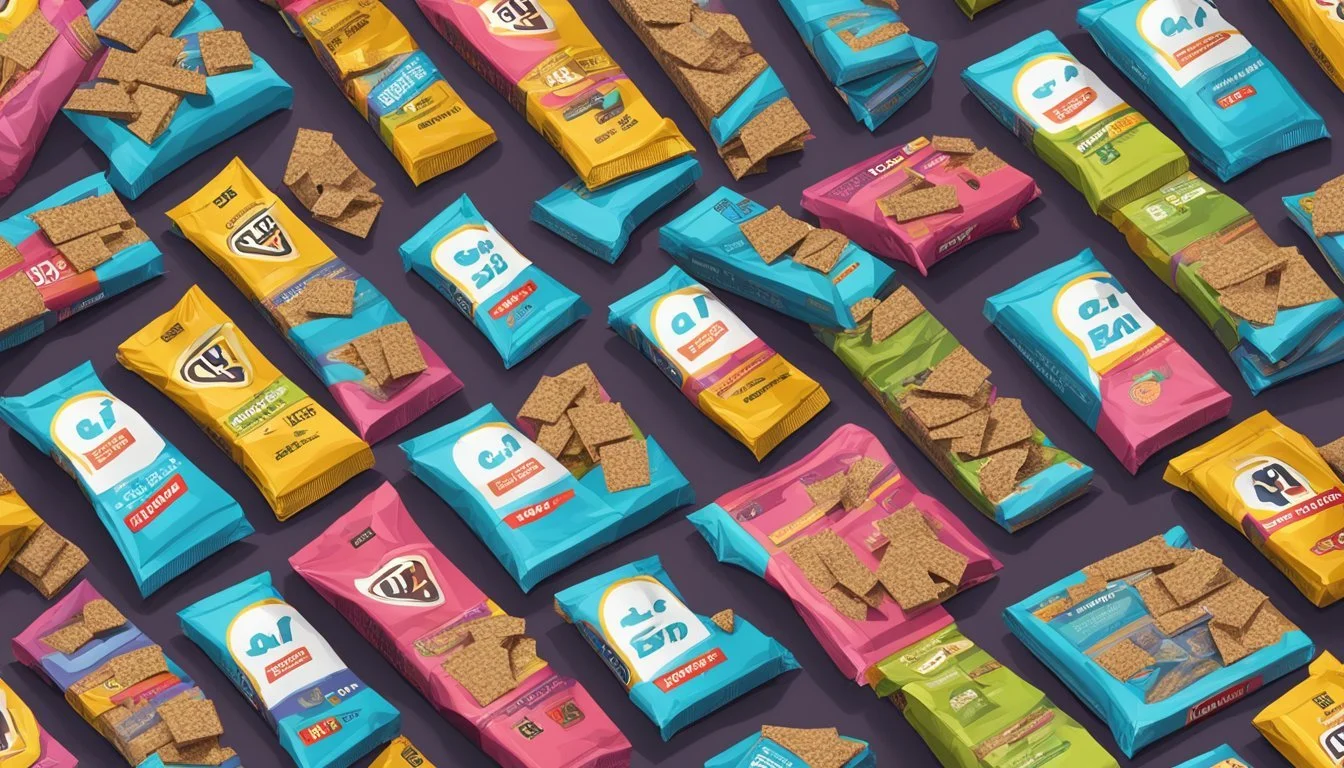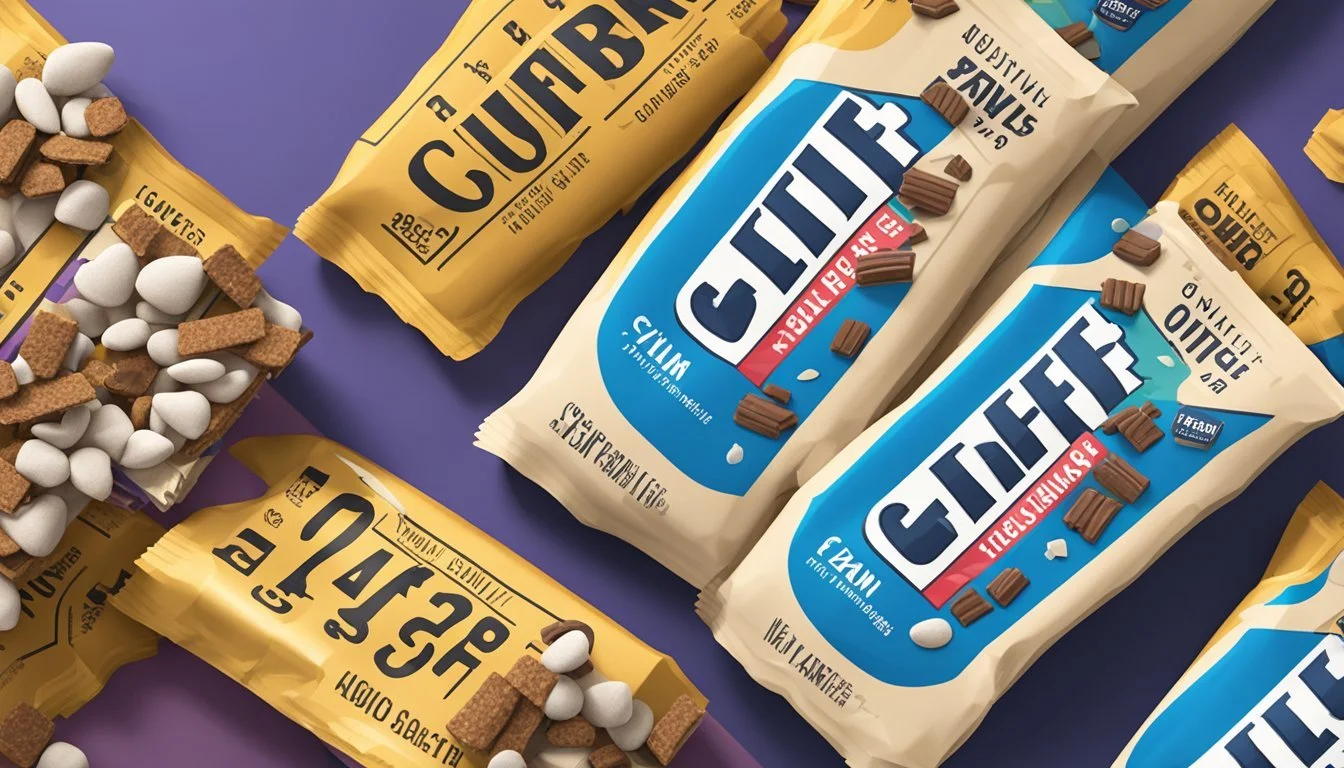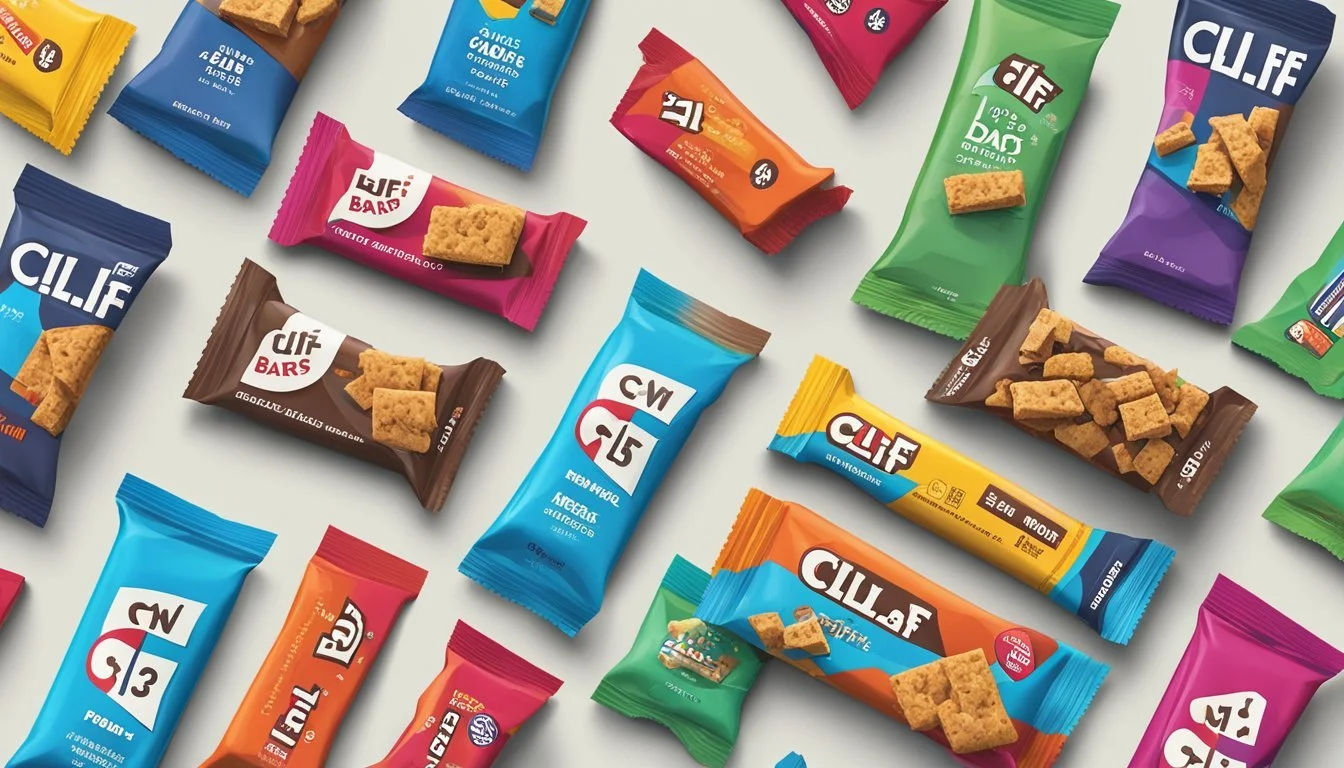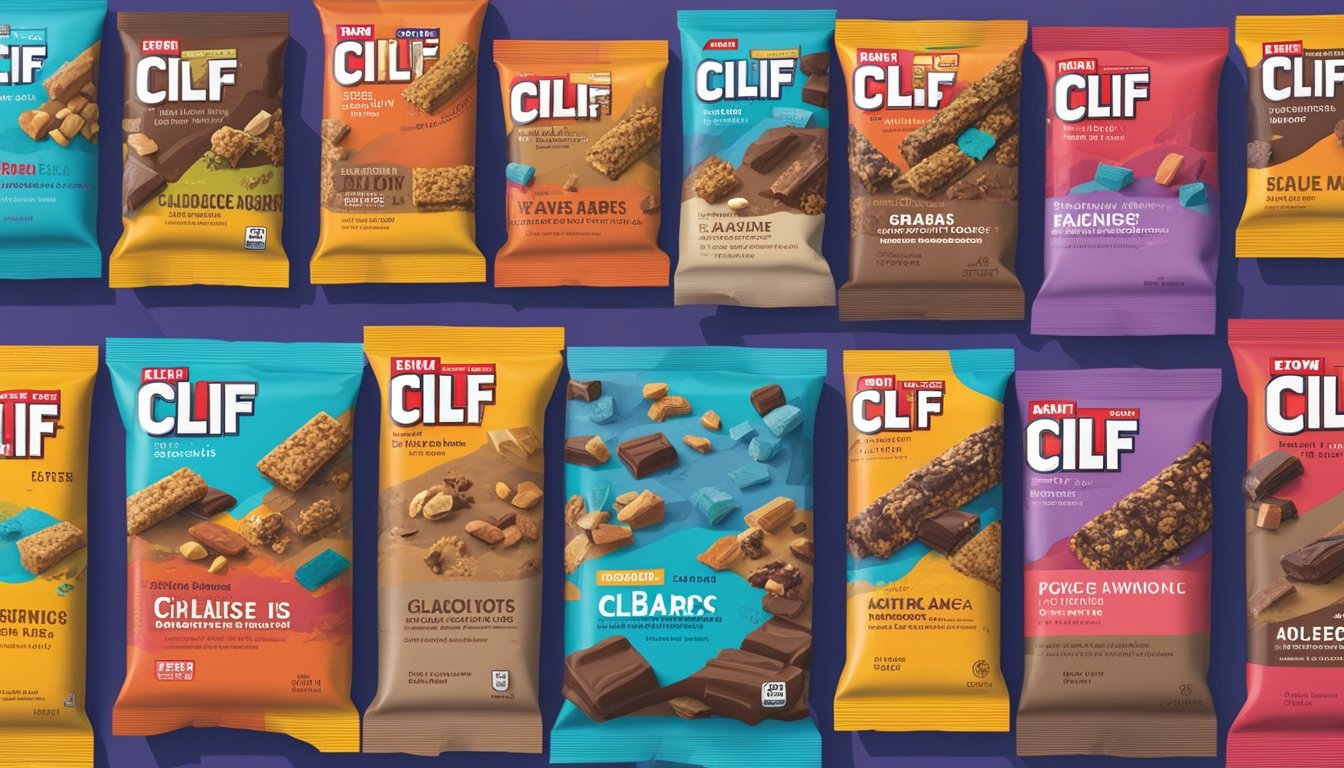How Many Servings of Clif Bars Is Too Much
Understanding Healthy Limits
For those wondering about the ideal consumption of CLIF Bars, it’s crucial to understand their nutritional profile and intended use. One CLIF Bar typically contains between 230 to 270 calories, 7 to 11 grams of protein, and 39 to 43 grams of carbohydrates, making it a calorie-dense option. This design caters to active individuals needing quick energy on the go, whether for hiking, biking, or intense workouts.
However, for someone leading a less active lifestyle, consuming multiple CLIF Bars in a day could easily lead to a calorie surplus and potential weight gain. While one CLIF Bar can serve as a meal replacement or substantial snack, eating several in one day might be excessive unless you have high caloric needs. Understanding your daily energy requirements and activity level is essential in determining how many servings of CLIF Bars are suitable.
Choosing the CLIF Nut Butter Bar might be a healthier alternative if you are concerned about sugar intake, as it contains lower sugar levels and more balanced macronutrients. Moderation is vital to maintaining a balanced diet, ensuring that you benefit from the nutritional advantages without overindulging.
Nutritional Profile of Clif Bars
Clif Bars provide a balanced mix of proteins, carbohydrates, fats, fiber, vitamins, and minerals. This composition is designed to support active lifestyles and provide sustained energy.
Protein Content and Benefits
Clif Bars are known for their protein content, which is essential for muscle repair and growth. Each Clif Bar typically contains around 10-20 grams of protein, primarily derived from soy protein isolate and other plant-based sources.
This high protein content is particularly beneficial for athletes and individuals engaging in strenuous workouts, as it helps in muscle recovery and maintaining muscle mass.
Carbohydrates for Sustained Energy
Carbohydrates are the primary energy source in Clif Bars, accounting for about 43% of their nutritional makeup. These carbohydrates are a combination of simple sugars and complex carbs, including oats.
This blend is designed to provide both immediate energy and sustained periods, making Clif Bars a popular choice for athletes during extended activities.
Fats and Healthy Fats in Clif Bars
Clif Bars contain fats, accounting for roughly 13% of their content. These include healthy fats from sources like nuts and seeds. These fats are necessary for energy and nutrient absorption.
While fats are often considered unhealthy, the fats in Clif Bars are balanced and include unsaturated fats beneficial for heart health.
Fiber and Its Advantages
Each Clif Bar offers a decent amount of fiber, around 5 grams per bar. This fiber comes from whole grains like oats and helps in digestion and maintaining stable blood sugar levels.
Fiber also contributes to feeling full for longer, which is advantageous for managing hunger during long outdoor activities or workouts.
Vitamins and Minerals for Overall Wellness
Clif Bars are fortified with essential vitamins and minerals, including iron, calcium, magnesium, and potassium. They also include B vitamins, vitamin A, and vitamin C.
These nutrients are vital for maintaining overall health, supporting immune function, and aiding in the energy metabolism process. They help ensure that the body's nutritional needs are met during physical exertion.
Clif Bars as Part of a Balanced Diet
Clif Bars can be a convenient addition to a balanced diet when used thoughtfully. They offer a mix of carbohydrates, protein, and fats, making them useful for different health goals.
Integrating Clif Bars into Healthy Eating Patterns
Clif Bars can be an option for those seeking a quick source of energy. These bars are often made with whole foods like oats and nuts, contributing to their nutritional value.
For those needing a healthy snack between meals, Clif Bars can provide sustained energy. With around 7-11g of protein per bar, they support muscle repair and growth. It's important to balance Clif Bars with other nutrient-rich foods such as fruits, vegetables, lean proteins, and healthy fats.
When to Use Clif Bars for Optimal Benefit
Clif Bars are particularly beneficial before or after workouts. They offer a quick boost of carbohydrates and protein, essential for energy and recovery.
For pre-workout energy, consume a bar about an hour before exercising. This timing helps ensure the carbs are readily available. Post-workout, a Clif Bar can help replenish glycogen stores and support muscle recovery.
Considerations for Weight Loss and Weight Gain
Clif Bars can fit into plans for both weight loss and weight gain, depending on their consumption. Each bar typically contains around 250 calories, which can be helpful for those looking to add calories for weight gain.
For those on a weight loss plan, Clif Bars should be eaten mindfully. They can serve as a meal replacement or a controlled snack, ensuring calorie intake is balanced. Monitoring the intake of these high-calorie bars is essential to avoid overconsumption.
Potential Health Implications
The consumption of Clif Bars can have various potential health implications, particularly in terms of sugar content, fat types, allergens, and their impact on individuals with diabetes.
Sugar Content and Impact on Blood Sugar
Clif Bars typically contain significant amounts of added sugar, with some flavors containing up to 20 grams per bar. This high sugar content can lead to rapid spikes in blood sugar levels, which may be concerning for those managing blood sugar.
High sugar intake over time can contribute to weight gain and increase the risk of developing insulin resistance, potentially leading to type 2 diabetes. It's essential for individuals to be mindful of their overall sugar intake from other sources as well to avoid exceeding daily recommendations.
Fat Types and Health Concerns
Clif Bars contain various types of fats, including saturated fat and unsaturated fats. While unsaturated fats are considered healthier and can support heart health, saturated fats can raise LDL cholesterol levels and increase the risk of heart disease.
Some Clif Bar varieties, such as the Nut Butter Bar, contain healthier fats from nuts and seeds, which are more beneficial than fats from processed sources. Consumers should check the nutrition label to understand the type and amount of fat present in their chosen bar.
Navigating Allergens and Special Diets
Clif Bars may contain common allergens such as peanuts, tree nuts, soy, and dairy. Individuals with food allergies or sensitivities need to carefully read ingredient lists to avoid adverse reactions.
For those following specific diets, such as gluten-free or vegan, not all Clif Bars may be suitable. Some variants are designed to meet these dietary needs, so checking specific product labels is crucial to ensure compatibility with dietary restrictions.
Clif Bars and Diabetes
For individuals with diabetes, Clif Bars can be problematic if not consumed with caution. The high sugar content can cause a sharp rise in blood glucose levels, making it challenging to manage blood sugar levels effectively.
Opting for bars with lower sugar content, such as the Nut Butter variety, and pairing them with sources of protein or fiber can help mitigate these effects. Diabetics must monitor their overall carbohydrate intake to maintain stable blood sugar levels and avoid complications.
Recommended Consumption
Clif Bars provide an energy boost and are often used by athletes and active individuals. It's crucial to consider the appropriate serving sizes to avoid potential health issues from overconsumption.
Serving Sizes and Overconsumption Risks
Each Clif Bar contains between 230 to 270 calories, primarily from carbohydrates and sugars. These energy-dense bars can be beneficial for staying fueled during intense activities.
However, eating multiple bars a day can significantly increase calorie intake, potentially leading to weight gain. The American Heart Association recommends limiting added sugars to 25 grams per day for women and 36 grams for men. A single Clif Bar can contain up to 21 grams of sugar, making it easy to exceed these limits.
Ingesting too many calories and sugars regularly can increase the risk of health issues like type 2 diabetes, dental problems, and metabolic disorders. Thus, limiting consumption to no more than one bar per day is advisable, especially for those not engaged in high-energy activities.
Understanding the Limitations
While Clif Bars are marketed as healthy snacks, they are not suitable for everyone. They are high in carbohydrates, with 39 to 43 grams per bar, mostly from sugars and starches. Individuals with sedentary lifestyles might find these bars unhelpful for weight management due to their high caloric and sugar content.
Additionally, the protein content, ranging from 7 to 11 grams per bar, is beneficial for muscle repair but may not be necessary in large amounts for those with moderate activity levels. It is important to incorporate a balanced diet with a variety of nutrient sources rather than relying heavily on energy bars.
Pay attention to the nutritional labels and consider consulting with a dietitian to align Clif Bar consumption with individual health goals and dietary needs.
Clif Bars for Specific User Groups
Different user groups, such as athletes and women, have distinct nutritional needs. Here, the focus will be on how Clif Bars can meet these specific requirements.
Athletes and Performance Nutrition
Athletes often need quick energy sources to maintain performance and support recovery. Clif Bars provide a balance of carbohydrates, proteins, and fats that help replenish glycogen stores and repair muscles.
Carbohydrates: Essential for restoring glycogen. Clif Bars contain around 230-260 calories per serving, making them an effective pre- and post-workout snack.
Proteins and Fats: With approximately 7-10 grams of protein and healthy fats, these bars support muscle recovery and sustained energy release.
Using Clif Bars strategically can support endurance and intensity in athletic activities.
Women and Nutritional Requirements
Women's nutritional needs may vary due to factors like age, activity level, and hormonal changes. Clif Bars can help meet these needs by offering balanced macros and essential nutrients.
Balanced Nutritional Value: Clif Bars include whole grains, nuts, and organic ingredients. Specific varieties like the "Nut Butter Bar" provide a better balance of macros with lower sugar and higher healthy fats.
Energy Needs: Women with active lifestyles or high metabolic rates may benefit from the steady energy release that Clif Bars offer. This supports not just physical activity but also daily nutritional requirements.
Using Clif Bars to supplement diets can help women maintain energy levels and meet their specific nutritional goals.
Types and Varieties of Clif Bars
Clif Bar & Company offers a wide range of energy bars to cater to various tastes and nutritional needs. Traditional Clif Bars come in many flavors, while specialized products include options like Clif Builders and Clif Thins, each designed for specific dietary goals.
Traditional Clif Bars and Their Flavors
Traditional Clif Bars are known for their hearty nutrition and flavor variety. Popular choices include Chocolate Chip, White Chocolate Macadamia Nut, Blueberry Crisp, and Crunchy Peanut Butter. Each bar typically contains around 230 to 270 calories, making it a substantial snack.
These bars provide 7 to 11 grams of protein, essential for muscle repair. Carbohydrate content ranges from about 39 to 43 grams, supplying the necessary fuel for physical activities. Ingredients such as organic oats and nuts contribute to their distinctive taste and texture.
Flavor Key Ingredients Chocolate Chip Organic Rolled Oats, Chocolate Chips White Chocolate Macadamia Nut Organic Rolled Oats, Macadamia Nuts, White Chocolate Blueberry Crisp Organic Rolled Oats, Blueberries Crunchy Peanut Butter Organic Rolled Oats, Peanut Butter
Specialized Clif Products
In addition to their classic bars, Clif offers specialized products aimed at different needs. Clif Builders are protein bars designed to help build muscle, containing 20 grams of protein per bar. These bars are perfect for post-workout recovery.
Clif Thins are a lighter option with fewer calories, suitable for those looking for a quick snack without overindulgence. They strike a balance between taste and nutrition, ideal for less intense activities.
Clif also offers Nut Butter Filled Bars, Fruit Smoothie Filled Bars, and Whole Lotta Bars. Each variety caters to specific preferences, from those needing extra protein to those desiring more natural ingredients. These specialized products highlight Clif's commitment to variety and nutrition.
Ingredients and Manufacturing
Clif Bars are composed largely of plant-based and organic ingredients, providing both nutritional benefits and environmental sustainability.
Plant-Based Ingredients
Clif Bars emphasize the use of plant-based ingredients such as nuts, seeds, rolled oats, and various forms of soy. Notable ingredients include soy protein isolate, soybeans, soy flour and rice flour, which together contribute to the bars' protein content. Common sources of carbohydrates in these bars are organic rolled oats and rice crisps, while tapioca syrup and cane sugar are used as sweeteners.
The presence of nuts and seeds adds healthy fats and essential minerals. Fruits are occasionally included, offering natural sugars and additional fibers. Clif Bars are designed to be suitable for most dietary preferences, including vegan diets.
Organic Ingredients and Environmental Impact
Many of Clif Bar's ingredients are organic. This includes organic rolled oats, organic brown rice syrup, organic cane syrup, and organic soy flour. By opting for organic ingredients, Clif reduces the use of pesticides and supports sustainable farming practices. This commitment extends to reducing their carbon footprint and promoting biodiversity.
The company also addresses environmental impact by using whole grains and minimizing artificial additives. Barley malt extract is sometimes employed for flavor enhancement. Their packaging is often sourced from recycled materials, showcasing their dedication to environmental sustainability.
These efforts not only improve the nutritional profile of the bars but also align with eco-friendly and socially responsible practices.
Myths and Misconceptions
Many people hold inaccurate beliefs about CLIF Bars, particularly regarding their nutritional value and use as meal replacements. This section aims to debunk these myths and clarify their nutritional roles.
Debunking Common Myths About Energy Bars
CLIF Bars are often misunderstood regarding their sugar content and overall health benefits. A prevalent myth is that these bars are "full of sugar and not much else." While it is true that CLIF Bars contain sugar, it is important to note that this sugar often comes from sources like dried fruits and organic syrups, making it a healthier option than refined sugars used in many snacks.
Additionally, CLIF Bars provide various essential nutrients, such as protein, fiber, and healthy fats, making them more than just sugary treats. They contain ingredients like rolled oats, nuts, and seeds, which contribute to their overall nutritional profile. These bars typically include 10 grams of protein per serving, supporting muscle repair and growth, especially for active individuals.
Clif Bars as a Meal Replacement Myth
Another myth is that CLIF Bars can act as a full meal replacement. While they are convenient and packed with essential nutrients, they are not a substitute for a balanced meal. Each CLIF Bar provides about 230 calories, which is often less than a regular meal but suitable as a snack or a supplement during intense physical activities.
They offer balanced macros, including 11 grams of fat, 27 grams of carbs, and 7 grams of protein, which could be beneficial for short-term energy and protein intake. However, a complete meal should ideally include a broader range of vitamins and minerals, protein sources, and fresh produce to ensure comprehensive nutritional benefits.
Consumer Insights
Different consumers have various reasons for choosing Clif Bars, from taste preferences to how well they fit into their lifestyles and fitness goals.
Taste Preference and Texture
Consumers often appreciate the distinct taste and dense texture of Clif Bars. Many find flavors like Chocolate Chip and Peanut Butter satisfying. The inclusion of ingredients like nuts and chocolate chips adds variety, similar to a homemade trail mix. For those preferring less sweet options, Clif Nut Butter Bars are a popular choice due to their lower sugar content.
Clif Bars' chewy texture is another key aspect. It provides a substantial feeling that many active individuals enjoy. The dense nature of these bars can be contrasted with lighter snacks, making them feel like a more filling option.
Convenience and Lifestyle Fit
Clif Bars score high on convenience. They come individually wrapped, making them easy to grab on busy mornings. This makes them a favorite among cyclists and hikers who need quick, portable energy sources. The compact size fits easily into bags or pockets, catering to active lifestyles.
Additionally, Clif Bars are versatile. Their packaging and durability mean they withstand various conditions, ideal for outdoor enthusiasts. These bars don’t require refrigeration, making them suitable for long trips or all-day activities without worrying about spoilage.
Fitness Goals and Clif Bar Selection
Fitness enthusiasts often select Clif Bars based on their nutritional needs. The high protein content assists in muscle repair, vital for post-exercise recovery. For instance, a bar typically contains 7 to 11 grams of protein, supporting those engaging in intense workouts.
Carbohydrates are another crucial component, providing immediate energy. Clif Bars often contain 39 to 43 grams of carbs, making them effective pre-workout snacks. Athletes and runners might choose these bars to fuel their training sessions. Hence, Clif Bars align well with both pre- and post-exercise nutritional strategies, depending on the type of bar chosen.
Furthermore, the variety within the Clif Bar range, including their Nut Butter Bars, allows consumers to select options that closely match their fitness goals. Bars with lower sugar content and added healthy fats appeal to those monitoring their intake more closely.











